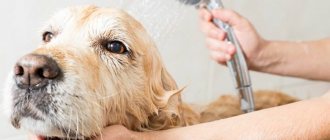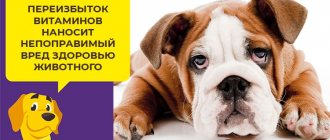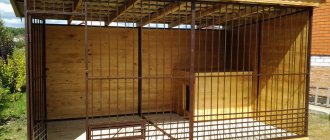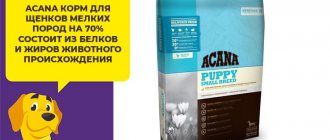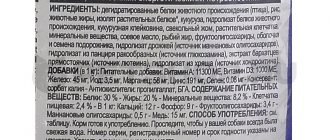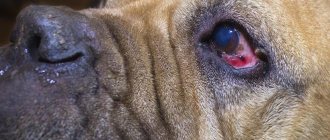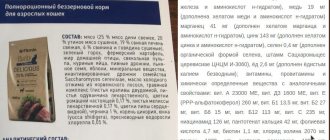Veterinary medicine effectively uses drugs that are used in traditional medicine to treat humans. One of these drugs is the well-known No-shpa, which is an antispasmodic with myotropic action. This drug is used in veterinary medicine both for the treatment of farm animals and pets, including for the treatment of dogs.
The use of the drug is justified in the following clinical cases:
- hypertonicity of the uterus in pregnant bitches;
- colic of various etiologies;
- cholecystitis and cystitis;
- stomach ulcer;
- allergic reactions and skin itching caused by them;
- a sharp decrease in blood pressure of unknown etiology;
- constipation;
- complications after various surgical interventions;
- urolithiasis, etc.
In these, and many other cases, No-Spa can quickly and effectively solve the existing problem, both as the main therapy and as part of complex therapy, which is carried out according to certain schemes and in accordance with current protocols for the treatment of certain diseases in dogs.
How and where to inject?
Intramuscularly
Injections are administered intramuscularly.
Also, in some cases, you can inject the drug into the withers, subcutaneously, in the area of the shoulder blades. This is determined by the problem at hand and is resolved by the veterinarian.
Subcutaneously at the withers
It is better to have a specialist give the injection to your four-legged friend. If this is not possible, you should adhere to the following recommendations:
- The injection should only be given into a relaxed muscle, otherwise it will hurt the animal. To do this, you can do a light massage. The paw should be slightly bent.
- There is no need to use a disinfectant. This is only required if there is inflammation.
- You should absolutely not touch the needle with your hands, otherwise you can cause an infection in the muscle.
- The solution used should be neither too cold nor too hot. The body temperature is optimal - then the animal will feel almost nothing.
- There are places on the leg where injections cannot be given. They contain nerve trunks that can cause a lot of unpleasant sensations in the animal.
Attention!
It is also important to place the syringe correctly.
There is no need to pre-dilute the solution. It is recommended to use insulin syringes equipped with particularly thin needles.
Intravenously
Intravenous injections are prescribed extremely rarely, as the risk of side effects and complications is high.
Description
No-Spa is a popular antispasmodic that can be used alone or in combination with other medications. The drug is widely used in the treatment of domestic animals.
The drug is aimed at reducing muscle tone in the gastrointestinal tract, genitourinary system, biliary tract, promotes dilation of blood vessels and normalizes blood circulation.
Due to its effect on smooth muscles, it helps relieve painful spasms and improve the condition of the animal.
No-shpu is used in the following cases:
- colitis;
- urolithiasis disease;
- renal colic;
- cystitis;
- cholecystitis;
- stomach ulcer;
- constipation;
- complications after surgery;
- increased uterine tone in pregnant animals.
Important! The drug does not affect the functioning of organs, does not accumulate in the kidneys and liver and does not affect the central nervous system.
The drug is available in the form of film-coated tablets or solutions intended for injection.
Daily portion by weight
For small breeds
As a rule, tablets are prescribed for individuals weighing over 10 kg; injections are indicated for smaller dogs.
The dosage is 1 ml of solution per 10 kg of weight, no more than two injections are performed in total, respectively, the daily dosage is 1 or 2 ml. But in each individual case it is determined by the doctor individually.
For large
Tablets are recommended for large dogs. A maximum of two are prescribed at the rate of one tablet (40 mg of active substance) per 10 kg of weight. If necessary, the maximum dosage is 80 mg of the main substance or 2 ml if we are talking about injections.
How many times?
No-shpu, both in the form of tablets and in the form of injections, cannot be used on dogs more than twice a day.
How many days?
A single dose may be sufficient to relieve symptoms. If longer-term treatment is necessary, the medication can be used for several days or even months. The exact course of treatment should be determined by the doctor in each specific case.
Release form and packaging
The medicine is available in the form of tablets and solution for injection. Round biconvex tablets are coated, the main active substance is drotaverine hydrochloride. Pills weighing 40 or 80 mg are packaged in plastic blisters of 20 pieces, each packed in a cardboard box and supplied with instructions.
The solution for injection is a clear, colorless liquid. Packaged in dark glass ampoules of 2 ml, placed in plastic contour packaging of 5 pieces each. 2 blisters are placed in a cardboard box.
If it gets bad
The drug has a minimum of contraindications and can be prescribed to animals of different ages and conditions.
Side effects are extremely rare. However, in some cases the following phenomena are possible:
- arrhythmia;
- a sharp decrease in pressure;
- depression of the respiratory center.
In the most severe cases, collapses were noted. Side effects mainly occur when the drug is administered intravenously, so such injections are practically not used.
Although the drug has low toxicity, it can be dangerous for dogs.
An overdose of the drug can cause nausea and vomiting, depression, loss of appetite or short-term convulsions. In this case, specific treatment is not required - usually the symptoms go away on their own after 1-2 days.
In some cases, an allergic reaction is possible. If its signs are noted, the drug is stopped. To mitigate the effect of the medication, anticholinergics can be used. They are indicated in the treatment of stomach or duodenal ulcers.
Contraindications and side effects
When the drug is administered intravenously to a dog and especially a puppy, blood pressure may decrease until collapse develops. Arrhythmia or depression of the respiratory center may occur. The drug is contraindicated in animals with hypersensitivity to its components.
No-shpa is also used with caution during pregnancy of a bitch and while feeding puppies. When treating gastric and duodenal ulcers, the drug must be used in combination with anticholinergics.
Reviews for no shpu for dogs
Review #1
My pug was vomiting for unknown reasons, but clearly not from food. And during the examination, the veterinarian also discovered pain in the abdominal area. We were prescribed no-shpa. Either inject 0.5 ml intramuscularly once a day, or give three-quarters of a 40 mg tablet. We didn’t inject it; they say the medicine works better this way. I’ve been giving the pills for a week now and I see that my dog is feeling much better.
Ruslana, Kyiv
Review #2
My dog suddenly started vomiting. They didn’t feed her for a day, but then immediately after eating, the vomiting continued the whole night. At the same time, the dog was not lethargic. And the chair was as usual. The vet said the symptoms were similar to cholecystitis. They immediately gave several injections into the muscle, including no-shpu.
We bring him home, and our baby becomes lethargic and his back legs pull, as if they are paralyzed. I was so scared, I called the clinic, and the doctor said it was from no-shpa. It’s just that the injection itself is painful and it will be painful for the dog to stand on its hind legs for some time. In further treatment, we switched to tablets and everything became fine. There was no vomiting or paralysis.
Yuri, Moscow
Did you like it? Share with your friends!
Drugs intended for humans are often used in veterinary medicine. One of them is No-Shpa, which can be used to treat animals of any breed.
It helps to effectively relieve spasms and colic. It is used in the form of tablets or injections. The drug provokes adverse reactions extremely rarely.
Indications for use
The main action of No-shpa is directed
to a moderate dilation of blood vessels and a decrease in the tone of the smooth muscles of internal organs.
The drug is recommended for use if there are contraindications to the use of medications from the group of anticholinergic drugs (for example, if there is glaucoma or prostate hypertrophy). The use of No-shpa allows you to relieve spasm
of smooth muscles due to cystitis, urolithiasis, intestinal colic and other ailments found in cats and dogs.
In veterinary medicine, Drotaverine and its analogs are prescribed for the treatment of pain syndromes caused by spasms in the gastrointestinal tract during peptic ulcer disease, in the genitourinary system when cholelithiasis or cholecystitis develops. The drug has no effect on the autonomic or central nervous system and does not accumulate in the kidneys and liver. Intravenous administration of the drug allows you to achieve a therapeutic effect after just two minutes with the maximum effect achieved after half an hour.
Diseases for which the use of No-shpa is indicated:
- colitis;
- stomach ulcer;
- increased uterine tone in pregnant females;
- cystitis;
- urolithiasis disease;
- tenesmus;
- constipation;
- renal colic;
- postoperative complications;
- cholecystitis;
- proctitis;
- spastic colitis;
- pyelitis;
- nephrolithiasis.
The drug is also used
before conducting various instrumental research methods to avoid possible spasm of smooth muscles.
According to the annotation of the drug No-shpa, the active ingredient of the drug is drotaverine hydrochloride. It is excreted from the body with bile and urine 72 hours after administration. The medication has two forms of release: in the form of film-coated tablets and ampoules for injection. Yellow tablets are packaged in plastic blisters of twenty pieces. The solution for injections is contained in dark glass ampoules with a volume of 2 ml.
The shelf life of the drug is 5 years. Store it away from sunlight at an air temperature of 15 to 25 degrees and out of the reach of children.
No-spa for dogs - how to use, indications and contraindications
Veterinary medicine effectively uses drugs that are used in traditional medicine to treat humans. One of these drugs is the well-known No-shpa, which is an antispasmodic with myotropic action. This drug is used in veterinary medicine both for the treatment of farm animals and pets, including for the treatment of dogs.
No-spa for dogs
Indications for use
The use of the drug is justified in the following clinical cases:
- hypertonicity of the uterus in pregnant bitches;
- colic of various etiologies;
- cholecystitis and cystitis;
- stomach ulcer;
- allergic reactions and skin itching caused by them;
- a sharp decrease in blood pressure of unknown etiology;
- constipation;
- complications after various surgical interventions;
- urolithiasis, etc.
No-spa relieves colic of various etiologies
In these, and many other cases, No-Spa can quickly and effectively solve the existing problem, both as the main therapy and as part of complex therapy, which is carried out according to certain schemes and in accordance with current protocols for the treatment of certain diseases in dogs.
In what dosage should the drug no-spa be given to dogs?
No-spa is prescribed to dogs of all breeds, taking into account that their weight must exceed 10 kg, that is, to dogs of medium and large breeds.
For small dogs it is quite difficult to calculate the dosage, and therefore in veterinary practice in this case No-spa is not used, but it is recommended to use other drugs that have a similar pharmacological effect.
This drug can also be administered intravenously, but some experts consider this not advisable and quite traumatic for the dog, and therefore do not practice intravenous injections of No-shpa in veterinary practice.
Contraindications and side effects of No-shpa
It is necessary to calculate the dosage taking into account the weight of the dog at the rate of 1 tablet or 1 ml of injection solution for every 10 kg. Thus, the dosage of the product for a Labrador weighing approximately 40 kg will be 4 tablets or 4 ml of solution in one dose. No-spa is a fairly harmless drug that can be used in therapy for both older animals and pregnant and lactating bitches.
This drug should be used with caution to treat puppies and dogs weighing less than 10 kg. In other cases, the drug has virtually no contraindications and is successfully used in veterinary practice.
Instructions for use for dogs
As already mentioned, No-shpa in injections and tablets can be prescribed not only to people, but also to animals, in particular dogs. The choice of the prescribed form of the drug depends on the individual tolerability of the drug, as well as on the general health of the patient.
The dose of Drotaverine is calculated based on the dog’s body weight. For individuals heavier than 10 kg, tablets are usually prescribed. To determine exactly how much medication to give, you must first weigh
pet. For every 10 kg of his weight, 40 mg of drotaverine is prescribed, that is, one tablet. Small animals are offered intramuscular injections at a ratio of 1 ml of solution per 10 kg. These procedures, when used skillfully, are not painful.
A more precise dosage is prescribed by the veterinarian, who also takes into account:
- disease;
- symptoms that need to be relieved;
- medications from the general therapeutic regimen.
In order for the dog to swallow the tablet, it is placed on the root of the tongue or mixed with a small amount of food. Injections are carried out with a prepared solution using a special insulin syringe equipped with a thin needle. According to the instructions, No-shpa injections are given if emergency therapy is necessary intramuscularly in the upper thigh. Intravenous injections are performed extremely rarely, since they often lead to side effects and all sorts of complications.
The drug belongs to the group of medications with a low hazard class and is prescribed to any breed of dog. It can be used to treat elderly and weakened animals. Therapy with Drotaverine in females during pregnancy and lactation should be carried out under the strict supervision of a physician. This medication is also prescribed to puppies with caution.
Dogs tolerate intramuscular injections and tablets better. Intravenous injections can cause a number of adverse reactions, which may include:
- a sharp decrease in pressure;
- depression of the respiratory center;
- cardiac arrhythmia.
In some cases, collapses even occur. Because of this, in the practice of modern veterinary medicine it is advised to inject medicine into a vein only in extreme cases.
Although the drug is not highly toxic, however, an overdose of No-shpa can have very unpleasant consequences. For example, there is a possibility of vomiting and nausea, loss of appetite. There are cases
short-term convulsions and depressed state of the animal. These symptoms do not require special treatment and disappear within two days. However, you will have to wait a little while taking the drug.
To mitigate the effect of No-shpa, the veterinarian can prescribe medications from a number of anticholinergics aimed at treating duodenal and gastric ulcers.
In some cases, an allergic reaction to the components of the drug may occur. This is an indication to stop giving the medicine to the animal or replace it with another antispasmodic.
If any adverse reactions occur, it is imperative to consult with a specialist and not self-medicate so as not to harm your pet.
No-spa for dogs is a well-known antispasmodic drug with myotropic action. It reduces motor activity and lowers the tone of smooth muscles of internal organs, moderately dilates blood vessels.
In this regard, the drug can be used in cases where drugs from the group of anticholinergic drugs cannot be used, for example, with prostatic hypertrophy or glaucoma. No-spa is good at relieving smooth muscle spasms, intestinal colic, and similar diseases.
No-shpa in veterinary medicine is used for the treatment and prevention of functional conditions and pain syndrome, which is caused by spasm of smooth muscles. These are spasms of the gastrointestinal tract associated with peptic ulcers of the stomach and urinary tract, associated with cholecystitis, cholelithiasis; However, the drug does not affect the central and autonomic nervous system. When administered intravenously, the effect of no-shpa appears within two to three minutes, and the maximum effect is achieved after 30 minutes.
- spastic colitis,
- constipation,
- proctitis,
- Tenesmus.
The drug is also used for postoperative colic due to gas retention or in connection with pyelitis, nephrolithiasis. This medicine reduces the tone of the uterus in pregnant bitches. It is also given before various instrumental research methods to prevent smooth muscle spasms.
No-Spa: antispasmodic for people and dogs
Drugs intended for humans are often used to treat dogs. One of these remedies is No-Shpa. The medicine effectively relieves spasms and colic and is used to treat animals of all breeds. It is possible to use tablets or injections, side effects are rare.
Indications for treatment
No-Shpa is an effective antispasmodic, used both independently and as part of a variety of therapeutic regimens. The drug is widely used in veterinary medicine, and it shows especially good results in the treatment of domestic animals.
No-Spa effectively relieves spasms in dogs.
The drug reduces the tone of the muscles of the gastrointestinal tract, genitourinary system, biliary tract, dilates blood vessels, and normalizes blood flow. The effect on smooth muscles relieves painful spasms and improves the dog’s condition.
The drug is actively used for:
Important. The drug does not affect the functioning of vital organs, does not accumulate in the liver or kidneys, and does not affect the central nervous system.
The medicine is available in the form of film-coated tablets or injection solutions. When administered intravenously, the drug begins to act within a few minutes, after half an hour the medicine reaches its maximum effect.
No-Shpa is available in yellow, film-coated tablets or solution for injection.
The drug is prescribed for preventive purposes before various studies. The medicine relieves muscle spasms and allows for more accurate instrumental diagnostics. The remaining active substances are completely eliminated from the body after 72 hours along with urine and bile.
Release form and packaging
The medicine is available in the form of tablets and solution for injection. Round biconvex tablets are coated, the main active substance is drotaverine hydrochloride. Pills weighing 40 or 80 mg are packaged in plastic blisters of 20 pieces, each packed in a cardboard box and supplied with instructions.
The solution for injection is a clear, colorless liquid. Packaged in dark glass ampoules of 2 ml, placed in plastic contour packaging of 5 pieces each. 2 blisters are placed in a cardboard box.
Instructions for use
No-Shpa tablets and solutions according to the instructions can be used not only for people, but also for dogs. Animals are prescribed medicine in tablets or injections. The choice of form depends on the condition and individual reaction of the animal.
No-spa is prescribed to dogs in a dosage depending on body weight. Tablets are given to dogs whose weight exceeds 10 kg. Smaller animals are offered intramuscular injections; in some cases, No-Shpa is administered subcutaneously to the dog.
For every 10 kg of dog weight, give 1 tablet of No-Shpa or 1 ml of solution.
Typically, the dosage is calculated depending on the dog's weight:
- For 10 kg of weight, 1 tablet of 40 mg or 1 ml of solution for injection is prescribed.
- Larger dogs are given 80 mg tablets, this pill is designed for 20 kg of weight.
The exact course is prescribed by the doctor, it all depends on the disease, the symptoms that need to be relieved, and the medications included in the general therapeutic regimen.
The tablets can be placed on the root of the tongue or given along with a small portion of food. Injections are made without prior dilution of the solution; it is preferable to use insulin syringes with particularly thin needles. For emergency treatment of especially small dogs, intramuscular injections are suitable; they are given in the upper third of the thigh.
Important. Intravenous injections are used much less frequently; the risk of complications and side effects is too great.
Contraindications and side effects
The drug has a low hazard class and can be prescribed to dogs of different breeds. Suitable for weakened and elderly animals; when treating pregnant and lactating bitches, veterinary supervision is required. Tablets and injections are administered to puppies with caution.
Dogs tolerate tablets and intramuscular injections better. Opinions regarding intravenous injections are divided. Some veterinarians believe that the risk is too great in this case, and unpleasant side effects may occur if the dosage is incorrect.
Dogs tolerate intramuscular injections of No-Shpa well, but it is better to avoid intravenous administration.
Among them:
- a sharp drop in pressure;
- cardiac arrhythmia;
- depression of the respiratory center.
In especially severe cases, collapses were recorded. In modern veterinary medicine, intravenous injections of No-shpa are used only in extreme cases.
Despite its low toxicity, No-shpa can be dangerous for dogs. In case of an overdose of tablets, nausea, vomiting, depression, loss of appetite or short-term convulsions are possible. No special treatment is required, unpleasant symptoms completely disappear after 1-2 days.
In some cases, an individual allergic reaction is observed; if corresponding symptoms are detected, taking the pills must be stopped. Anticholinergics will help soften the effect of the drug. They are necessary in the treatment of stomach or duodenal ulcers.
Reviews from dog breeders
Galina, Tyumen. My Australian Shepherd suddenly started vomiting. At first I chalked it all up to ordinary food poisoning; the dog was quite cheerful. But during the day the vomiting repeated, the dog became bored, began to refuse food and hide. We took him to the vet.
The preliminary diagnosis is colitis. It wasn't that bad, but the dog was clearly in pain. They prescribed No-shpa in tablets. She gave it along with wet food, but then she just started throwing it at the root of the tongue. A day later the dog felt better, now we are going through a series of tests, we are afraid of a recurrence.
Many dog owners have No-Shpu in their first aid kit.
Nadezhda, Nizhny Novgorod. I always have No-spa in my medicine cabinet, I use it to relieve stomach cramps. Therefore, when the operated dog was prescribed these tablets, he didn’t even have to go to the pharmacy.
The doctor said that the medicine would relieve colic from gases, and it was harmless for animals. He offered an injection, but I refused - it was scary. It’s better to take pills, it’s more familiar. The dog is recovering normally, I give him 2 tablets a day.
We don’t take painkillers, and everything is fine.
Stanislav, Kazan. I ran into a problem - after giving birth, my Dalmatian started having cystitis. The veterinarian prescribed antispasmodics in tablets, but the dog refused to take them.
In the end we settled on injections. It turned out that No-shpa subcutaneously is what a dog needs. There were no side effects, the symptoms of cystitis went away after 3 days, but we honestly completed the entire course.
I recommend it, it’s not as scary as some people think.
Source: https://sobaki-pesiki.ru/no-shpa-dlya-sobak-dozirovka-pokazaniya.html
